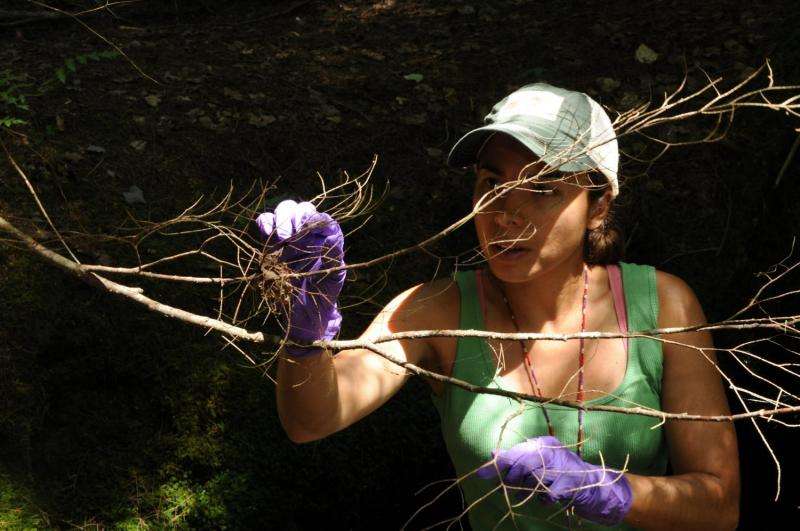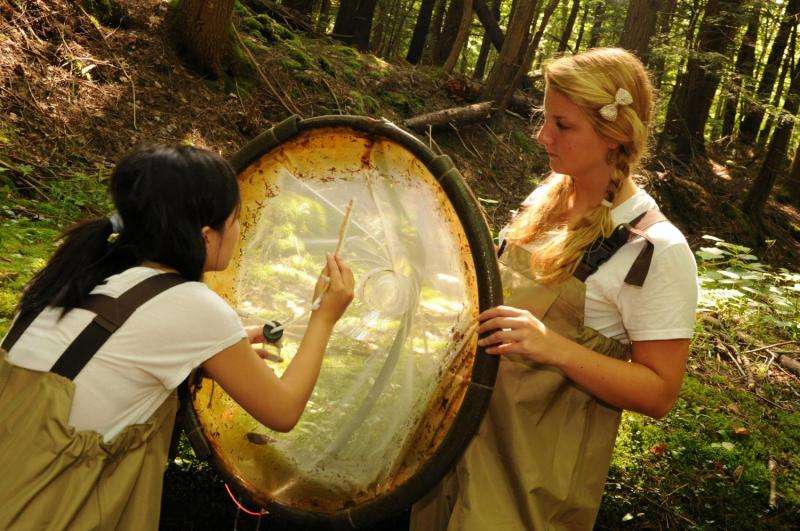You taste like mercury, said the spider to the fly

More mercury than previously thought is moving from aquatic to land food webs when stream insects are consumed by spiders, a Dartmouth College-led study shows.
The findings, which appear in the journal Ecological Applications, shed new light on the influence of dissolved organic carbon in the spread of mercury contamination.
Mercury concentrations in aquatic environments have increased globally, exposing consumers of aquatic organisms to high mercury levels. Exposure to mercury depends on their food sources as well as environmental factors influencing mercury's bioavailability. The majority of the research on the transfer of methylmercury, a toxic and bioaccumulating form of mercury, between aquatic and terrestrial food webs has focused on land carnivores that primarily eat fish. But a gap exists in our understanding of the factors regulating methylmercury bioaccumulation by other terrestrial predators, specifically consumers of adult aquatic insects.
Because dissolved organic carbon binds tightly to methylmercury, affecting its transport and availability in aquatic food webs, the Dartmouth-led team hypothesized that dissolved organic carbon affects methylmercury transfer from stream food webs to terrestrial predators feeding on emerging adult insects. They tested this hypothesis by collecting data over two years from 10 streams spanning a broad range of dissolved organic carbon and methylmercury concentrations in New Hampshire.

Their results show that there is transfer of methylmercury from aquatic systems to terrestrial food webs when stream invertebrates emerge from streams and are caught and consumed by spiders. In addition, the amount of dissolved organic carbon in the stream mediates the amount of methylmercury that is bioavailable to the aquatic and terrestrial food webs. The more dissolved organic carbon there was in the water, the more methylmercury there was as well. But streams with the highest dissolved organic carbon concentrations had emerging stream prey and spiders with lower methylmercury concentrations than streams with intermediate dissolved organic carbon concentrations. Therefore, the streams with the highest methylmercury concentrations did not have the greatest bioaccumulation in the stream invertebrates or spiders.
"Our paper is important because the role of dissolved organic carbon in mediating the bioavailability of methylmercury is still poorly understood, and the reach of methylmercury from aquatic systems where it is produced to terrestrial systems is broader than previously recognized," says lead author Ramsa Chaves-Ulloa, who conducted the study as part of her PhD at Dartmouth's Department of Biological Sciences.
The study included researchers from Dartmouth, Bates College, Colby-Sawyer College and the Bates Institute of Ecosystem Studies.
More information: Ecological Applications, dx.doi.org/10.1890/15-0025.1
Journal information: Ecological Applications
Provided by Dartmouth College




















